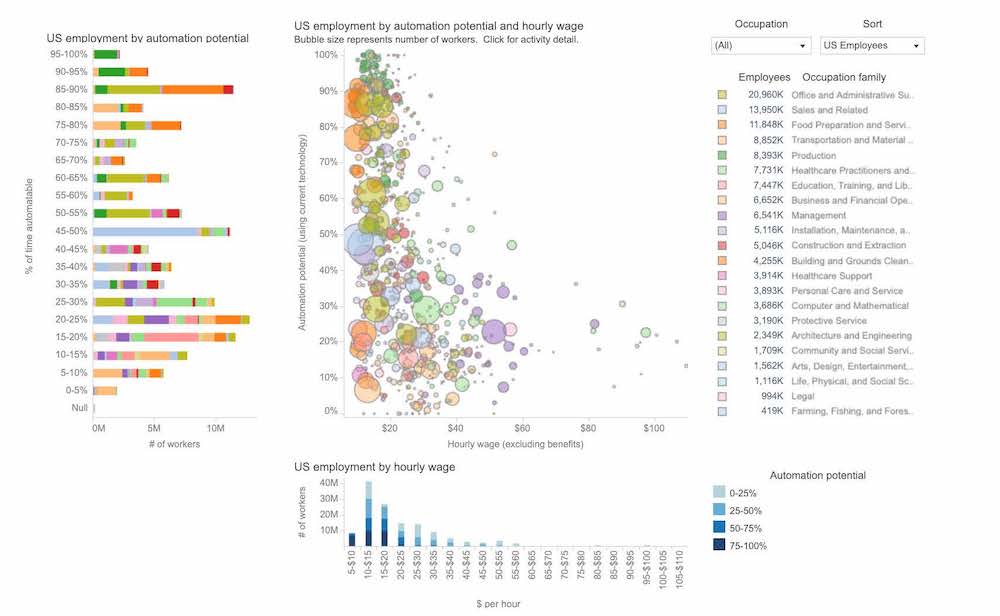You arrive for your meeting, and the customer ushers you in.
You have a longstanding relationship with the customer’s company, and you wanted to give them an update on your newest products. You pull up a chair and fall into your usual routine, catching up on the latest developments in your personal and professional lives, and after a productive meeting you shake hands and promise to meet again in a few weeks.
And then you tap a button on your virtual reality headset and arrive for your next meeting with a new client located 1,000 miles away.
Technological advancements are poised to upend the way sales employees work, removing barriers to collaboration and encouraging new paths of innovation. Cutting-edge tools such as AI, the cloud, robotics, and the metaverse will also change the manner of work itself, eliminating many jobs that are dangerous, repetitious, or physically demanding.
Up to half of the tasks currently performed by salespeople are able to be automated, according to a McKinsey study. Some of the tasks most primed for automation include order management, pricing and quotas and contracts, and post-sales follow-ups.
Even with automation, there remains a deep need for highly skilled salespeople in complex selling environments. Lead identification and action plans require creativity and forethought and can’t be easily automated.
As author Ben Lytle wrote in his new book “The Potentialist: Your Future in the New Reality of the Next Thirty Years,” “Teams are highly effective at complex tasks; the challenge has always been assembling the teams and getting them to work together effectively.”
Technology will change not only the jobs being conducted and the training necessary for those jobs, but the manner in which we collaborate across teams.
Job Losses vs. Job Gains
How many total jobs will be lost or gained to automation in the coming decades is anyone’s guess. McKinsey Global Institute in 2021 estimated that figure at 25% of the U.S. workforce, or 45 million Americans. Those estimates fail to account for the creation of new jobs—ones that will be more creative and involve deeper levels of problem-solving.
Retail and administrative support roles will be lost to automation, while millions of new jobs will emerge.
“The jobs of the future are expected to be more machine-powered and data-driven than in the past, but they will also likely require human skills in areas such as problem-solving, communication, listening, interpretation and design,” according to a Deloitte report on the future of work.
“As machines take over repeatable tasks and the work people do becomes less routine, roles could be redefined in ways that marry technology with human skills and advanced expertise in interpretation and service.”
The Need for Collaboration
All of that automation will require effective collaboration. As Lytle writes, “People who previously performed narrow, specialized jobs in relative isolation will need to think and act very differently if they want to excel in collaborative problem-solving and innovation.” As Lytle sees it, mass production of problem-solving and innovation could be the biggest social benefit of the Fourth Industrial Revolution.
People and organizations will need to perform more effectively and think outside the box to tackle the problems of the future, integrating technology like virtual reality and augmented reality into their operations and assembling teams in the most dynamic ways.
Assessments and Adjustments
But as we experience new work models and new technologies, there will be a continual need to assess their effectiveness and any adjustments that need to be made.
One of the obstacles that many teams endured during the COVID-19 pandemic was the loss of face-to-face contact. Video conferencing tools such as Zoom and Microsoft Teams provided remote connectivity, but in a flattened, two-dimensional format that can often feel isolating and empty.
Workers have adapted to a world of virtual meetings, but that doesn’t mean they necessarily love the webcam being trained on them. A study published in November 2021 by the Journal of Applied Psychology aimed to quantify “Zoom fatigue” and found a link with camera use and how “women and employees who are newer (i.e., lower organizational tenure) are likely to have higher self-presentation costs that make them experience more fatigue.”
New Possibilities
Virtual meetings don’t have to be fatiguing. And meetings of the future are poised to diminish the disconnectedness and isolation of today’s video conferencing technology. The metaverse offers the opportunity to host meetings anywhere, even on the moon, or to host 3D walk-throughs of the building, stopping people (avatars) in the break room or hallway for a quick virtual chat.
There are newly emerging crossover opportunities to order books or takeout food within the metaverse and have them arrive to your home.
Technologically enabled collaboration as we know it is only in its infancy. As London-based economics and technology advisor Mark Purdy wrote for Harvard Business Review, “The metaverse opens up new possibilities to rethink the office and work environment, introducing elements of adventure, spontaneity and surprise. A virtual office doesn’t have to be a drab, uniform corporate environment downtown: why not a beach location, an ocean cruise or even another world?”
What a nice idea for your next metaverse meet-up with your longtime customer. You could share a cruise trip together or head on a new adventure, going anywhere you imagine.


